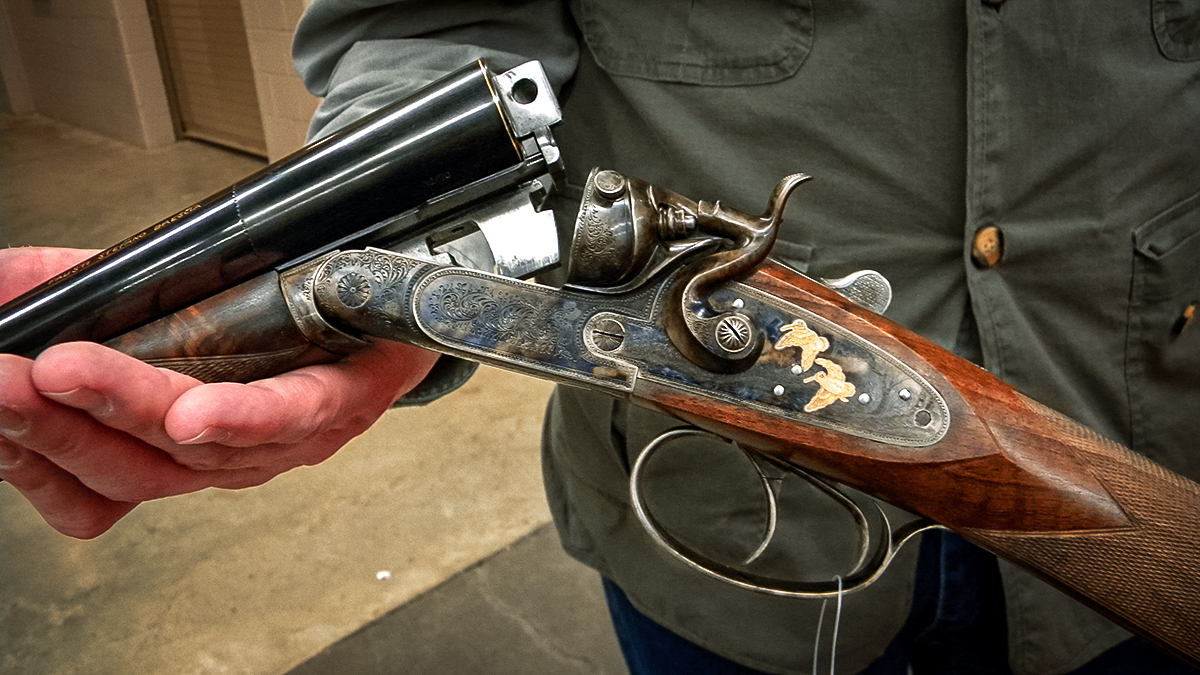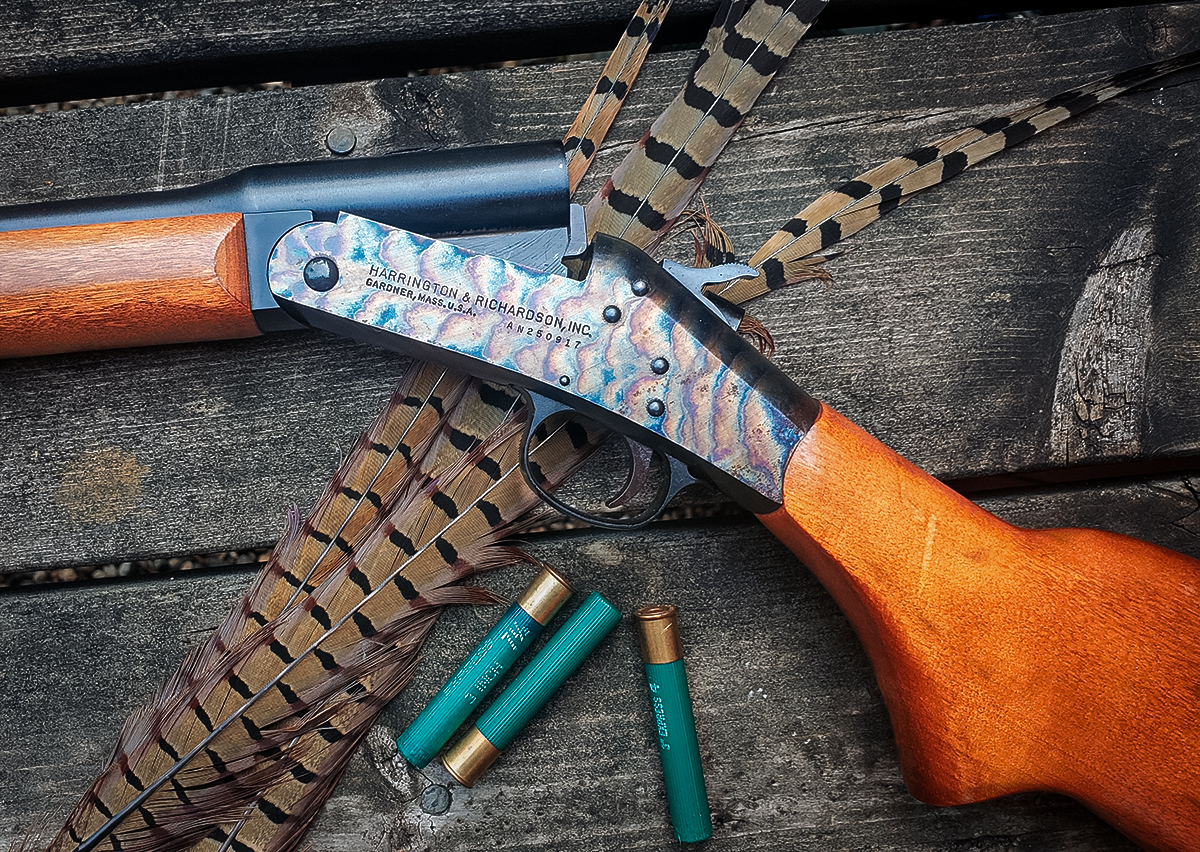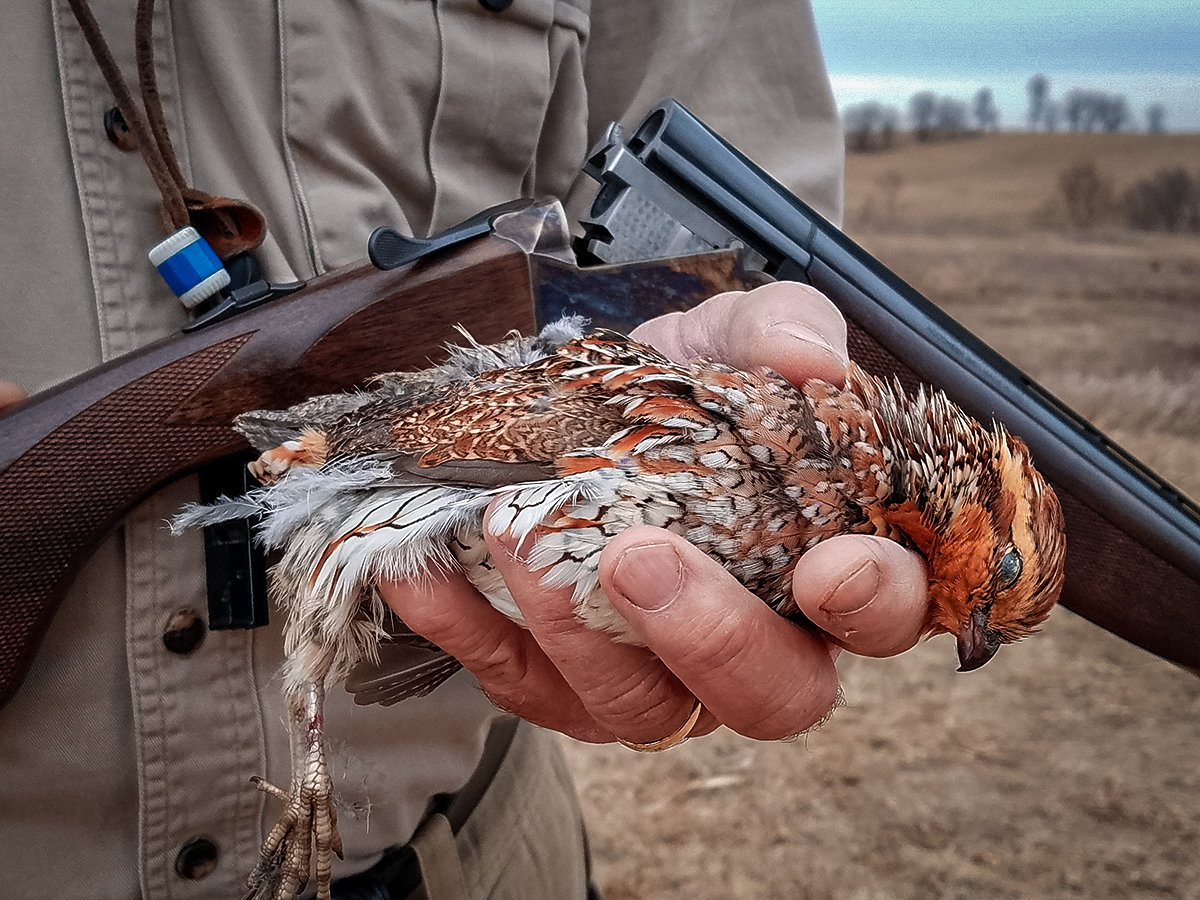Compared to a modern semi-auto shotgun, with all its firepower, a break action gun looks archaic — obsolete, even. And it’s true; break actions have changed very little in the past 100 years. But 100 years from now, they will still be here. Break action guns have their advantages — no shotgun design is more durable.
When I say break actions will still be here in 100 years, I mean the very same break action your parents handed down to you will still be shooting a century from now if you and your heirs take care of it. No shotgun design is more reliable, either.
And, like it or not, the limited ammo capacity of a break action means it is perceived as less of a threat to society. It’s not impossible to think that the break action may outlast pumps and semi-autos for that reason alone, with the way gun laws seem to be headed in this country.

RELATED – What Makes a Tactical Shotgun ‘Tactical’?
Break Action Shotgun History: Crash Course
Prior to the invention of the primed cartridge in the early 1800s, shotguns were muzzleloaders with no need to break open in the middle. The change began in 1812 when a Swiss gunsmith named Jean Samuel Pauly invented a primed cartridge and a shotgun to shoot it. Pauly’s gun had fixed barrels and a lifting breech block. While the gun was not a success, it was a sign of things to come.
In the 1830s, Frenchman Casimir Lefaucheux
patented the pinfire, a cartridge that came with its own firing pin projecting sideways from the cartridge rim. Lefaucheux also invented a break action shotgun. A lever on the bottom of the gun turned the lug that locked the barrels in battery so they could swing open and shells could be dropped into the chambers.

There were small holes in the breech ends of the barrels so the pins could stick up to where the hammers could strike them. While the pinfire quickly caught on in France, conservative British gunmakers were slow to come around, and pinfire ammo had a few inherent problems — such as the habit of going off if they landed on the pin when dropped or on a bumpy wagon ride if they weren’t packed well. But, the pinfire cartridge was a big improvement over muzzleloaders and primer caps.
By the 1850s, the British trade had adopted the pinfire, which was soon supplanted by primed shotshells we would recognize today.
The break action’s time had come.
RELATED – The Turkey Shotgun: What You Want in a Dedicated Gobbler Getter
Gun FAQs
What is a break action shotgun?
A break action shotgun takes its name from the way it opens at the breech. When you push the locking lever sideways, the gun opens, and the barrel(s) pivots downward, allowing you to load the gun.
Break actions are usually either O/U, side-by-side, or single-barrel guns, although three- and four-barrel guns have been made, including combination guns that marry shotgun and rifle barrels.
What are the four types of shotguns?
Shotguns are categorized by their action types. The four types are break action, which comprises some single-shots; O/Us and most side-by-sides; semi-automatics, which includes gas, inertia, long recoil, and short recoil operation; slide or pump action; and bolt action guns.

Do bolt action shotguns exist?
Bolt action shotguns have been made both as inexpensive alternatives to pumps and as dedicated slug-shooting guns with rifled barrels that derive some of their accuracy from the tight lock-up of the bolt action.
There is also one bolt action turkey gun on the market, designed for mounting a scope and making accurate shots with tight patterns.
Does anyone make a lever action shotgun?
Lever action shotguns have a long history. The great firearms designer John Browning wanted to make a pump action repeater for Winchester, but, mindful of their brand identity as the lever action riflemaker, they wanted a lever gun, and Browning responded with the Model 1887, a 10-gauge gun and one of the first successful repeaters.
Most people who know that gun today saw it in Terminator 2. There are a few .410 lever actions being made today.
RELATED – The Over Under Shotgun Is Not as Old as You Think
Age of the Break Action Shotgun

With the invention of the Anson and Deeley boxlock in 1875 in England, shotgun hammers moved inside the action for the first time and the side-by-side gun that we know today was basically perfected.
Break action shotguns didn’t change all that much as far as the general public was concerned until the 1930s.
In 1905, U.S. gunmaker Daniel Myron Lefever made the first break action, single-barreled trap gun, and London gunmaker Boss & Co followed up with the first modern O/U in 1909.
While many gunmakers on both sides of the Atlantic produced affordable side-by-side guns, it wasn’t until 1931, when the Browning Superposed appeared, that people of average means could save up for and afford an O/U.
From that time on, break actions have changed very little.
Advantages of the Proven Design

Once you get past the part where break actions hold only one or two (occasionally three) shells, then you can talk about their advantages. Tweedy Edwardian hunters worked around the double gun’s limitations by having two — or even three or four — matching guns made and bringing a loader with them on driven pheasant and partridge shoots.
A practiced shooter/loader team passing guns back and forth could pour a stream of fire at incoming birds such that having “four dead in the air” at once was the mark of a well-driven game shot.
For those of us without manservants, loading a break action quickly is more of a challenge. It’s one that we don’t often have to meet if we confine the use of our break action guns to upland hunting and clay shooting. But loading a break action in the confines of a duck blind is, IMO, more trouble than it’s worth.
Beyond the disadvantages of little firepower and slow reloads break actions have a lot going for them. The first is durability. Gun writers and gun nuts like to debate the various bolting mechanisms that keep the gun closed during firing. And while those matter, the real stress in a break action isn’t that it wants to open when it’s fired but that it wants to stretch.

If the lugs on the bottom of the barrels are well-fitted into the frame, the gun can resist those stresses tens of thousands of times or more. Keep everything clean and greased, and you and the next generation or two will have a hard time outlasting a good break action shotgun.
Break action shotguns are the most reliable shotguns of all. The enclosed action means they have neither ejection nor loading ports where debris can find its way inside the gun. Their mechanisms are simple, and some people never pull the stock off their gun to clean and lube the locks because they never get dirty and they never stop working.
And break guns eat everything and anything if it’s the right gauge.
Any misshapen shell of the appropriate diameter that might choke a pump or semi-auto will almost certainly fire if you can stuff it into the chamber of a break action. Nor is any load too light because there is no action that needs to be cycled. It’s an easy design to clean, too, when the time comes.
A break action gun is more compact than a pump or semi-auto of equal barrel length, and the heaviest part of the gun — the steel frame — sits between the shooter’s hands. Some hunters and most target shooters prefer that feel. And the two barrels of the gun let you use two different chokes for targets or birds near or far.

Finally, rightly or wrongly, the break action is seen as safer and more sporting than other types of shotguns, as long as you don’t hack off the barrels and the stock.
Let’s start with the latter: If you show up at some places, mostly Georgia quail plantations or Texas quail leases, with anything other than a smallbore double, you’ll be looked at askance.
It is true that two good shooters with semi-autos can devastate a covey rise, which should never be the goal. But “sporting” has more to do with the shooter than with the gun they shoot.
Still, a break action is welcome in places where your Benelli with an extended magazine may not be.
While break actions aren’t inherently safer (Dick Cheney shot that lawyer in the face with an O/U, after all), it’s easier to handle a break action safely.

When you carry one broken open at the gun club, it is clear to everyone that your gun is safe. In the field, you can open it with a flick of your thumb, making it completely incapable of firing while you cross an obstacle. Likewise, you can open it, take the shells out, and check the barrels for obstructions without looking down the muzzles.
All of those tasks are far more difficult with a semi or pump gun, especially with gloves on.
RELATED – The DP-12 Shotgun: A Wild Design That Works
Buying a Break Action Shotgun
Break actions are aspirational guns for a lot of hunters and shooters, meaning they are priced so you can just barely afford them. As a break-action fan with a pump-gun budget, I take advantage of the break-action’s durability and buy my guns used.
Let someone else take the depreciation hit on a new gun. I get a perfectly good gun for less money. As a bonus, someone else has already put the first scratch on the stock, so I don’t have to obsess about it.

With experience, it’s not hard to tell if a gun has been abused. If a break action hasn’t been treated badly, it will last forever — especially if it’s a hunting gun.
Look down on the top lever from above. As a gun wears, the lever will move from a roughly 5 o’clock position to 6 o’clock or beyond. Anything past 6:00 means the gun has quite a few miles on it.
Check to see if it’s still tight by removing the forend, taking the barrels in one hand and holding the grip with the other, then giving it a wiggle. If it doesn’t budge, the gun is tight.
Take the barrels off, and hang them from one finger by the locking lugs beneath the chambers. Strike the barrels with a fingernail, and they should ring. If they thunk instead, the solder is no good, and the ribs will have to be resoldered and the barrels reblued at a cost of several hundred dollars.

Look down the bores and be sure they are not pitted, dented, or, worst of all, bulged. Check the wrist of the stock for cracks, and, using dummy shells or snap caps, be sure the gun functions properly.
If it has choke tubes, make sure they’re not rusted in place. I have both bought and sold (with full disclosure on my part, of course) guns with tubes stuck in the barrels. Getting them out costs money and can wreck a barrel.
Any of the above problems, even bulges, can be made right with enough money. Figure in the cost of repairs to any offer you make if the gun isn’t appropriately priced, or walk away from it and look for another. There are lots of break actions around, new and used.
If you’d rather look at a new gun, I have suggestions because telling people how to spend their gun money is one of the best parts of my job.

If you want to keep the price under $1,000, the CZ Drake O/U and the Bobwhite G2 side-by-side are great values.
In the $2,000 range, Beretta’s Silver Pigeon is unbeatable, and I would look at a Dickinson Arms side-by-side, which is a beautiful fit-and-finished Turkish double.
The Fabarm Autumn is a very well-made and very pretty side-by-side for $4,000. Fabarm’s sister company, Caesar Guerini, has an excellent O/U lineup that begins with the $4,400 Woodlander.

Beyond that, you can spend anything up to the price of a car or the price of a house on a break action (no shit), and while it may not outlast a house, it will still be shooting long after you’ve had to junk the car.
READ NEXT – The Lever Action Shotgun: Why It’s Only Popular in Movies










Comments